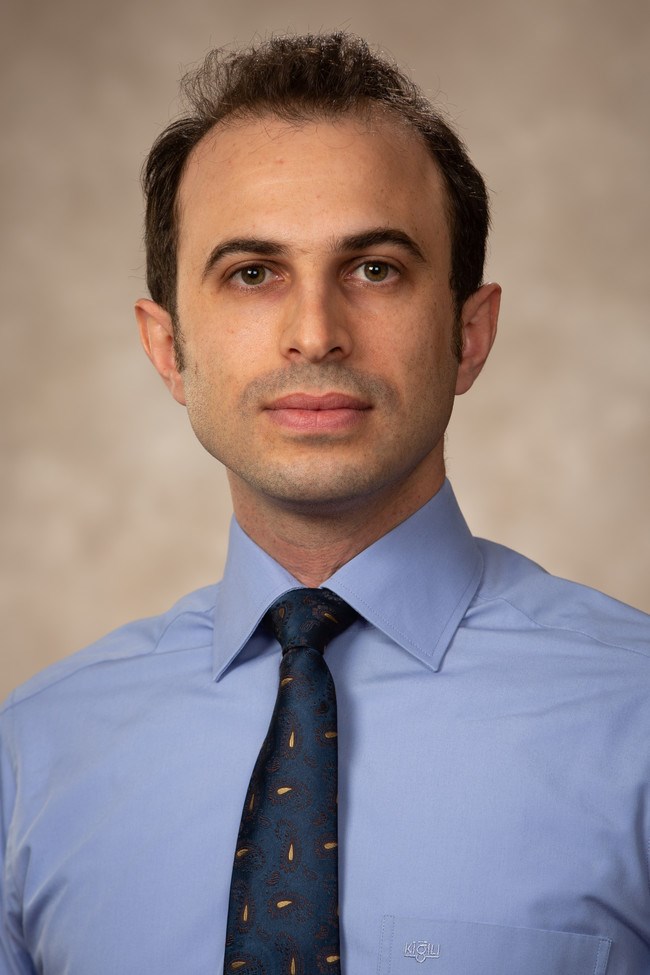Using 3D Printers and Nanotechnology to Give Nutrition a Boost

Our bodies have trouble absorbing bioactive compounds, naturally occurring chemicals found in foods that carry potential health benefits. Arkansas researchers are using advanced nanotechnology and cutting-edge 3D food printers to create food products that could improve the delivery of these bioactive compounds. Employing supercritical carbon dioxide, they have developed a protocol to prepare bioactive compounds in a more digestible form. Then, precision 3D printing is used to prepare small beads of starch containing the compounds, a form ready for use in nutrition supplements or 3D printed foods. Applying this technology could improve human nutrition, someday leading to new ways to prepare convenient, healthy foods.
The Problem
Bioactive compounds are frequently touted for their health benefits. Previous research has demonstrated how bioactive compounds extracted from fruit and vegetables can be infused into other foods or drinks to enhance their health benefits. While they are common ingredients in nutrition supplements, humans have a hard time taking full advantage of their value because they are not easily absorbed during digestion. In part, this is due to bioactive compounds generally having crystalline structures, which are water-insoluble. Because bioactive compounds are not readily available to human digestion systems, much of their nutritional value is wasted. Further, the compounds have poor chemical stability. They lose effectiveness quickly, shortening their shelf life for retail storage and shipping.
The Work
To address these issues, Ali Ubeyitogullari, assistant professor of food engineering with the Arkansas Agricultural Experiment Station, works at the intersection of food engineering and human health. Ubeyitogullari uses two state-of-the-art technologies to investigate potential methods to make bioactive compounds more readily available to the human body.
First, he employs supercritical carbon dioxide, which is carbon dioxide gas that has been subjected to high pressure — ranging from 1,450 pounds per square inch to 5,786.8 PSI — at mild temperatures — 104 degrees to 140 degrees Fahrenheit — to render carbon dioxide in a supercritical state. In this form, it behaves like a liquid and gas mixture, which can be used to reduce bioactive compounds to a nanoscale and dry them in a form that avoids crystallization. He then evaluates 3D food printing as a way to convert the nanoscale bioactive compounds into usable products.
The Results
Using supercritical carbon dioxide, Ubeyitogullari has successfully reduced bioactive compounds to nanoscale particles. He has also developed a process for creating products suitable for nutrition supplements. Using precision 3D food printing, he loads the nanoscale bioactive compounds into a digestible starch biopolymer, a porous material also made using supercritical carbon dioxide. The resulting 3D-printed products are tiny starch beads loaded with bioactive compounds.
Next, to assess how the still-experimental formation affects body absorption, Ubeyitogullari is simulating digestion in the lab to see if the supercritical carbon dioxide process makes the products more available to human tissue than the more common freeze-drying manufacturing method. The tests involve dissolving the biopolymer-encapsulated particles in an artificial medium that simulates digestion.
If it tests well, Ubeyitogullari said the next step is an in vitro test, which will help confirm the transfer of nutritional value to human cells.
The Value
Ubeyitogullari said 3D printing offers several advantages over traditional manufacturing methods, allowing for the precise control of the amount of bioactive compound used in a product. Not only that, but it offers precise control of where the bioactive compounds will be located within a food matrix.
A 3D food printing system would also be more flexible than current manufacturing technology. An existing manufacturing line requires a complete shutdown and complex reformatting of the manufacturing equipment to change from making one product to another. A 3D printing system can be reset for another product by simply changing the printing cartridges and selecting a different computer program to run it.
Ubeyitogullari said health-promoting bioactive compounds could one day be infused directly into 3D-printed foods. For now, that would likely be cookies or candy, products he often prints for teaching and demonstrations. In the future, he envisions a system where people can select a meal from a menu on their smart device, add nutritional supplements or medicines and send it to the printer. It could be ready to eat when they get home from work.
Read the Research
Designing future foods: Harnessing 3D food printing technology to encapsulate bioactive compounds
Taylor & Francis Online
Published online: Oct. 26, 2023
doi.org/10.1080/10408398.2023.2273446
Supported in part by
USDA National Institute of Food and Agriculture, AFRI award no. 2023-67018-40747.
About the Researcher
Read the Research
Designing future foods: Harnessing 3D food printing technology to encapsulate bioactive compounds
Taylor & Francis Online
Published online: Oct. 26, 2023
doi.org/10.1080/10408398.2023.2273446
Supported in part by
USDA National Institute of Food and Agriculture, AFRI award no. 2023-67018-40747.

Ali Ubeyitogullari
Assistant Professor
Ph.D., Food Science and Technology, University of Nebraska-Lincoln
M.S., Food Engineering, Middle East Technical University, Ankara, Turkey
B.S. Food Engineering, Middle East Technical University, Ankara, Turkey
